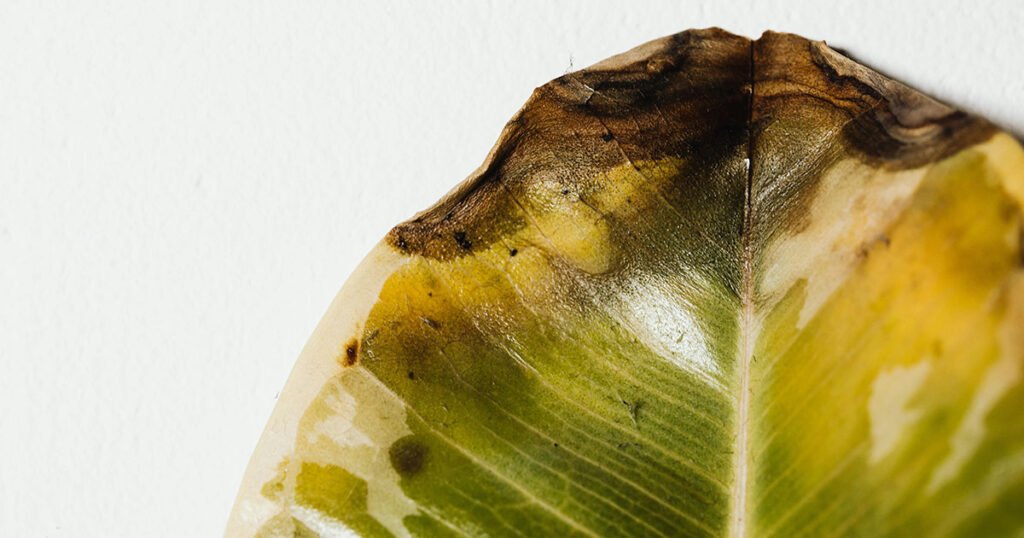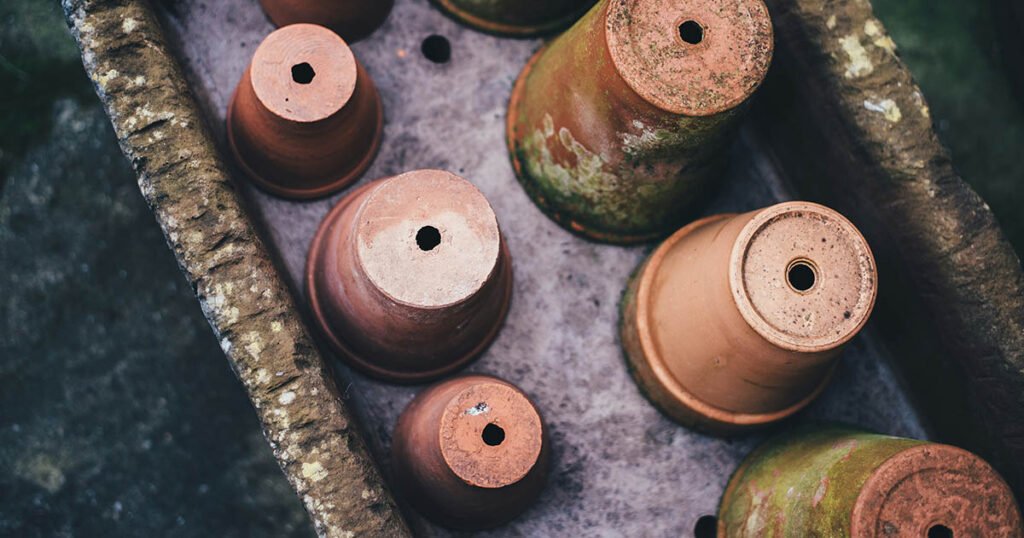Overwatering is one of the most common ways to harm your indoor greenery unintentionally. While it might seem counterintuitive, too much water can be more detrimental than too little. Knowing the clear signs of overwatering and taking swift action can save your plants from decline or even death.
Why Overwatering Happens
- Routine watering without checking soil moisture: Many plants simply don’t need weekly watering.
- Poor drainage & compacted soil: pots without holes or dense soil prevent airflow.
- Environmental factors: high humidity, low light, and cool temperatures reduce transpiration.
The Signs Of Overwatering
1. Yellowing Leaves
Yellow leaves are among the earliest warnings. When roots are waterlogged, they suffocate, struggling to supply nutrients. This often causes the oldest, lowest leaves to turn yellow first. If fertiliser or bright light doesn’t revive them, check your watering habits.
2. Persistent Wilting
Wilting doesn’t always mean your plant is thirsty. In overwatered plants, roots rot and can’t absorb water, so leaves droop even when the soil is wet. This counterintuitive symptom is a red flag, don’t ignore limp foliage when the soil feels damp.
3. Mushy Stems, Leaves, or Roots
When waterlogged tissue begins to rot, stems and leaves feel “mushy” or soft. You may spot this at the base of the plant or on the root mass once repotted. If roots are brown and slimy, root rot is present—an advanced stage that requires immediate action.
4. Edema: Blisters or Spots on Leaves
Oedema, or water-induced cell rupture, causes tiny blisters or cork-like spots on leaf undersides. These visible bumps signal that roots are absorbing water faster than leaves can transpire. This is a symptom of overwatering exacerbated by humidity and poor air circulation.
5. Brown Leaf Edges or Spots
Brown or black patches can result from either drought or overwatering, but on persistently damp plants, they’re likely due to rot or tissue collapse. When edges are dry and crispy, it’s different, but soft spots and discolouration on damp, lower leaves are concerning.

6. Mold, Algae, or Fungus Growth
Overwatering creates ideal conditions for mould, algae, and fungus gnats. You might notice powdery growth, slimy residue, or tiny black gnats hovering around the soil. Fungus gnats lay eggs in wet soil, then larvae feed on delicate roots, worsening the plant’s decline.
7. Stunted Growth or Failure to Produce New Leaves
When roots are damaged, plants can’t grow. Lack of new foliage, stunted height, or shrinking leaf size—despite adequate light and nutrients—strongly suggests root distress from overwatering.
How to Rescue Overwatered Plants
If you suspect that you may have overwatered your plant, follow the steps below to help it recover:
- Stop watering immediately.
- Let the soil dry: check again after 5–7 days.
- Inspect roots: repot into fresh, well-draining soil if roots are rotten. Trim dark areas.
- Improve soil mix: add perlite, bark, or pumice to enhance aeration
- Repot: Use a clean container with drainage holes. Sterilize pot if root rot was present.
- Adjust watering schedule: apply only when the top 2–3 cm of soil are dry. Morning is best for watering.
- Enhance airflow & light: place next to an open window or outside until recovered.
- Address pests/mould: introduce sticky traps, remove contaminated soil, or use natural remedies.
Prevention & Best Practices
To prevent any future overwatering issues, its important to consider the following factors:
- Know your plant’s water needs: succulents vs. tropicals have vastly different requirements.
- Choose the right soil and potting mix for your plant type.
- Check soil moisture regularly: use finger test or moisture meters.
- Water smartly: pour until drainage appears, allow full drainage. If using a saucer, empty after 15-30 minutes.
- Account for seasonal changes: reduce watering in winter as plants grow more slowly.
- Maintain proper humidity & airflow: to avoid oedema and fungal growth.

